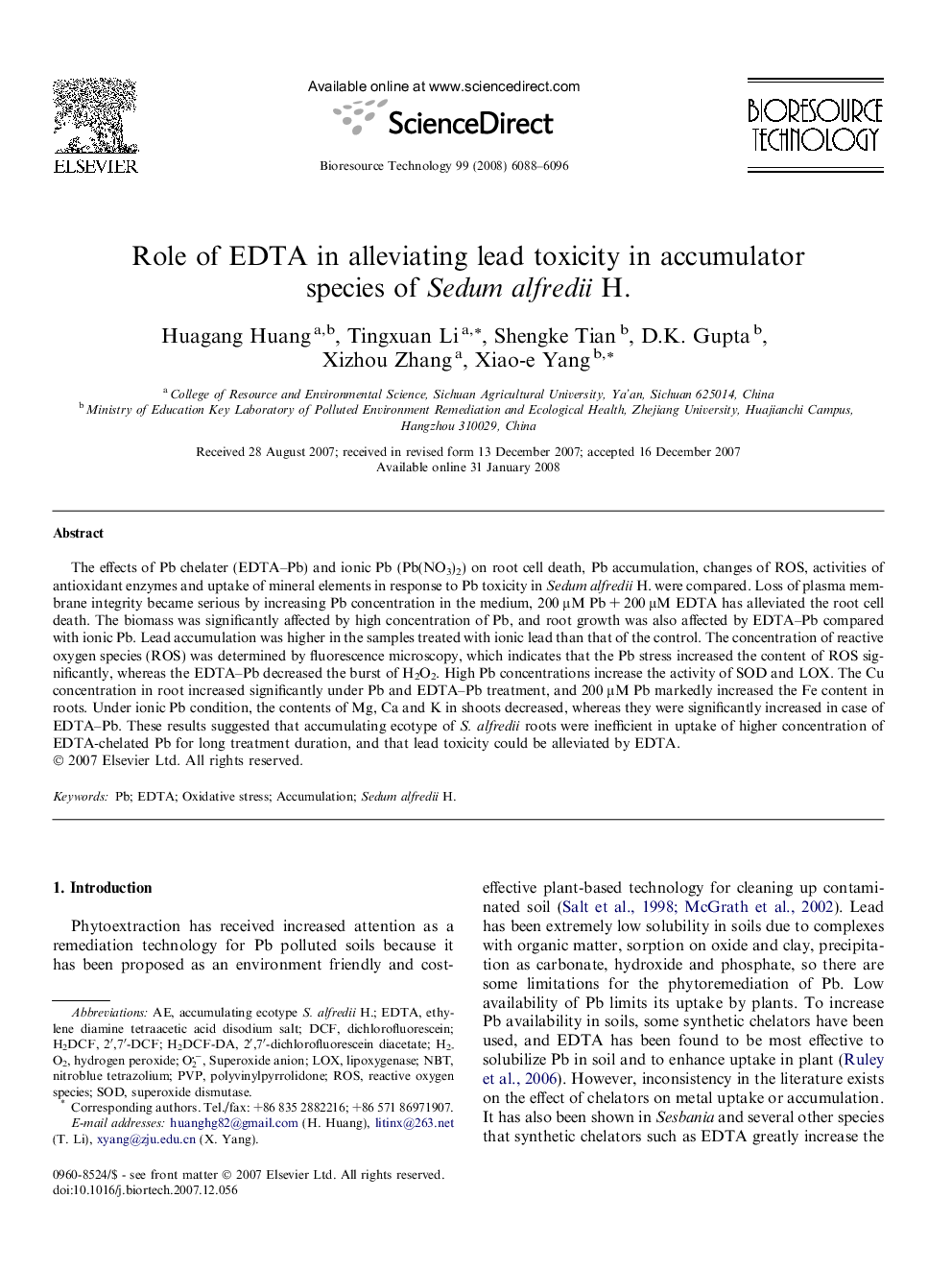| Article ID | Journal | Published Year | Pages | File Type |
|---|---|---|---|---|
| 684847 | Bioresource Technology | 2008 | 9 Pages |
The effects of Pb chelater (EDTA–Pb) and ionic Pb (Pb(NO3)2) on root cell death, Pb accumulation, changes of ROS, activities of antioxidant enzymes and uptake of mineral elements in response to Pb toxicity in Sedum alfredii H. were compared. Loss of plasma membrane integrity became serious by increasing Pb concentration in the medium, 200 μM Pb + 200 μM EDTA has alleviated the root cell death. The biomass was significantly affected by high concentration of Pb, and root growth was also affected by EDTA–Pb compared with ionic Pb. Lead accumulation was higher in the samples treated with ionic lead than that of the control. The concentration of reactive oxygen species (ROS) was determined by fluorescence microscopy, which indicates that the Pb stress increased the content of ROS significantly, whereas the EDTA–Pb decreased the burst of H2O2. High Pb concentrations increase the activity of SOD and LOX. The Cu concentration in root increased significantly under Pb and EDTA–Pb treatment, and 200 μM Pb markedly increased the Fe content in roots. Under ionic Pb condition, the contents of Mg, Ca and K in shoots decreased, whereas they were significantly increased in case of EDTA–Pb. These results suggested that accumulating ecotype of S. alfredii roots were inefficient in uptake of higher concentration of EDTA-chelated Pb for long treatment duration, and that lead toxicity could be alleviated by EDTA.
